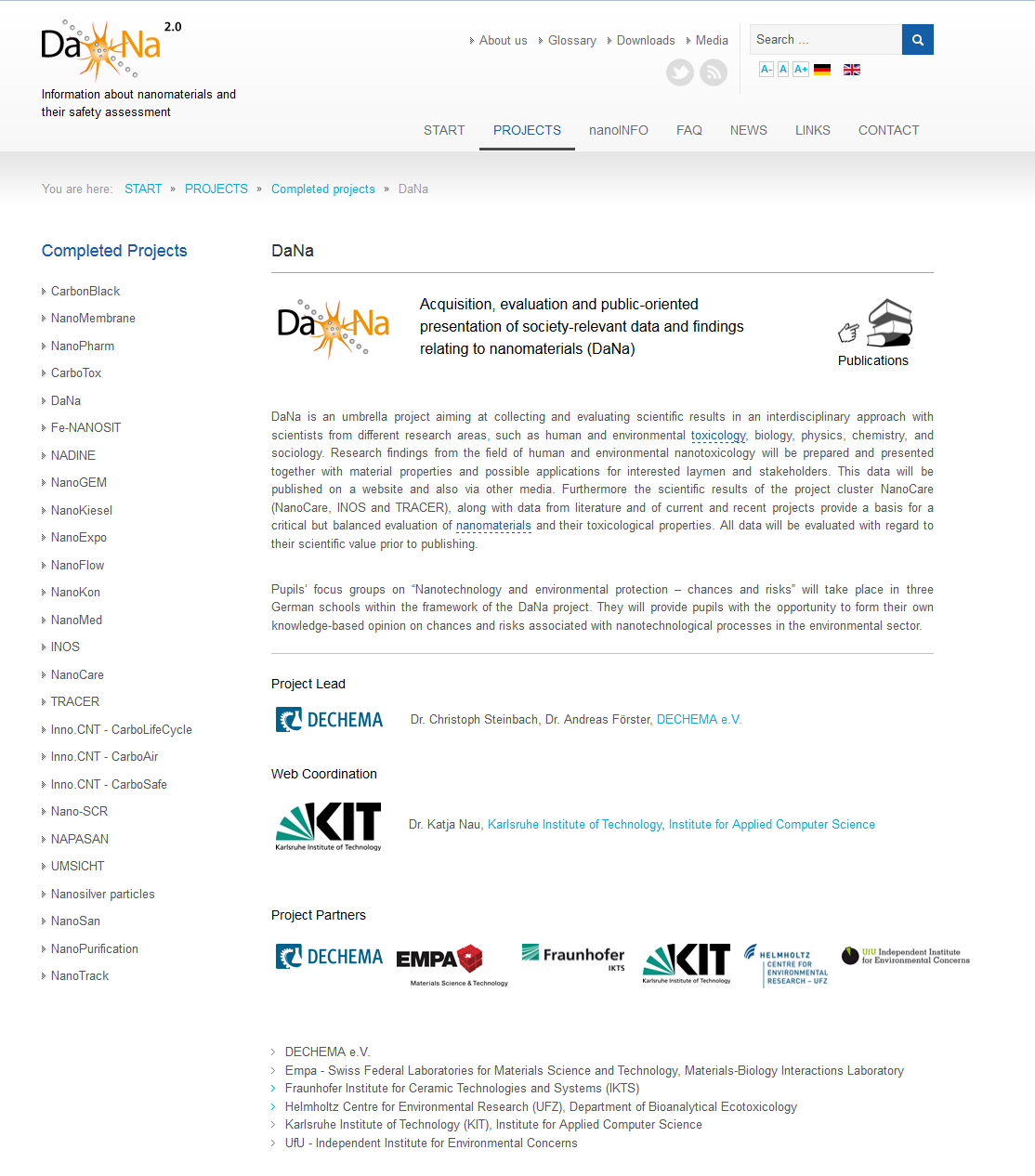
On account of their lung deposition ability and ability to penetrate cell walls and biological barriers, their high mobility within tissue and living organisms, as well as their high reactivity, particulate nanomaterials can be harmful for human health and/or the environment. Various German, European and international research projects focus on this risk. We contribute to the collection, assessment and publication of data and knowledge relevant for the wider public with regard to nanomaterials (http://www.nanopartikel.info) as part of DaNa, a project supported by the German Federal Ministry of Education and Research (BMBF). This is based on earlier work performed by Fraunhofer IKTS within INOS, another BMBF project.
The knowledge base page of the DaNa project supplies general information on the properties and behavior of nanoparticles, their adsorption into the human body, as well as potential side effects.
Furthermore, DaNa gives a comprehensive summary of the former and current projects of the German Federal Ministry of Education and Research (BMBF) and international developments and references to current literature. It is also possible to submit questions concerning the properties, potential and risks posed by nanomaterials.
Collaborating with the Helmholtz Centre for Environmental Research (UFZ) Leipzig and the Technische Universität Dresden, we use our capabilities in surface analytics and methods of suspension characterization (powder and suspension characterization) to support the safe handling of particles through analyses and consulting in the context of the Particle Safety Laboratory (PSL).